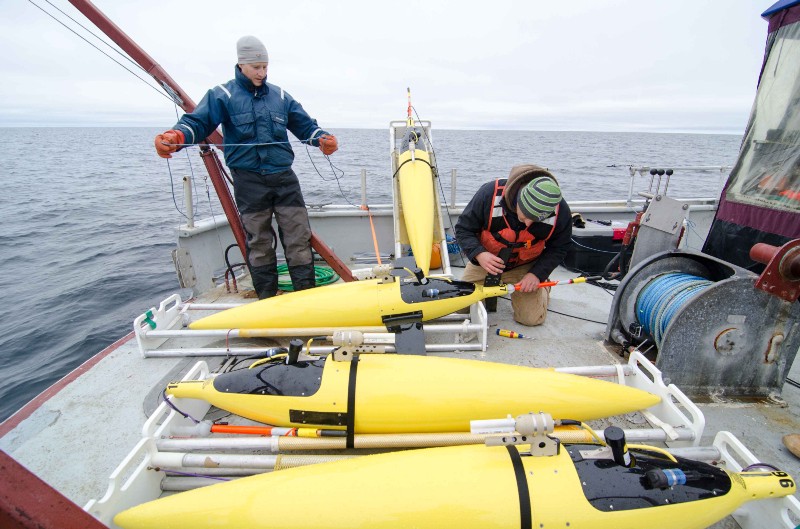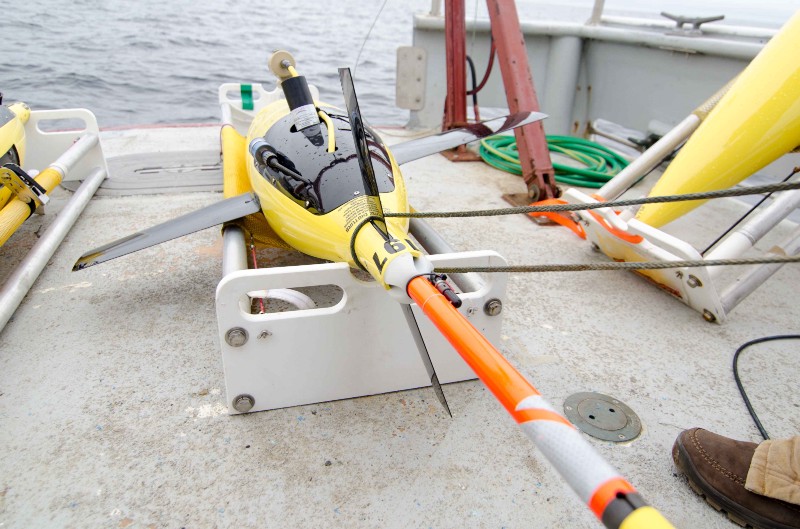

After five years and millions of dollars, Google’s multimillion-dollar robotic car still gets lost outside Mountain View and can’t reverse or park without human help. Meanwhile, the University of Washington’s fish-like robotic Seaglider gets unceremoniously dumped over the side of a boat and can navigate one of the world’s most hostile environments for months on end, monitoring its surroundings as it swims.
Four $100,000 Seagliders are about to be hauled out of the Beaufort Sea after a summer swimming in the chilly waters of the Arctic Ocean. That they have survived unscathed is a relief to Craig Lee, the oceanographer in charge of a months-long experiment called the Marginal Ice Zone program. “We lose more than we’d like,” he admitted. “If something goes wrong out there, it’s done. But what you really want back is the data–that’s the valuable part.”

It’s valuable because the Arctic is crucial to the health of the planet, and yet is still so poorly understood. Every year, researchers follow the seasonal breakup of the Arctic sea ice from satellites in space. This year, the polar ice retreated to its sixth smallest extent since records began in 1979, stranding tens of thousands of walruses on a tiny island. The steadily shrinking ice sheet has also been linked to the freezing polar vortex weather that blasted some U.S. cities last winter.
Instead of just observing from orbit, scientists would like to get closer to the ice, or even beneath it, as it melts. But toughened icebreakers cost upwards of $75,000 a day, and there simply aren’t enough of them to monitor a whole ocean. This is where the Seagliders come in. The torpedo-shaped robots do not have motors. Instead, each is fitted with an external oil-filled swim bladder and wings. When the bladder is emptied, by sucking the oil inside the glider, it becomes less buoyant. As the glider sinks, water flows over its wings and generates forward motion. When the vehicle nears the bottom, oil is pumped back into the bladder, the wings change their position, and the robot sweeps gently upwards again.

A Seaglider can cover about 12 miles or more a day in this way, using so little electrical power that its battery can last 10 months. This summer, Professor Lee’s Seagliders ranged back and forth between the open ocean and the water under the ice sheet, popping their noses above the waves occasionally to beam their data to satellites overhead.
“If you have a ship, you’re up there for a couple of weeks and then you come home,” said Lee. “Maybe you get something done, maybe you don’t. If you have a robot, you can maintain that persistence.” In fact, the Marginal Ice Zone (MIZ) program actually has dozens of cooperative robots, developed by institutions around the world. Robots swimming on the surface emit low frequency sounds,inspired by whale song, that help the Seagliders navigate under the ice sheet. Other robots bob around, carried wherever currents take them, while still others collect data on the ice as it slowly breaks up.
“The key to understanding the melting is having all these measurements. No one single instrument holds the key to the whole set of processes,” said Lee. The avalanche of data from this fleet of robots promises to keep researchers in the United States, France, Britain and South Korea busy for years to come. If, as they hope, the results unlock new understanding of the world’s most mysterious ocean, robot scientists will surely be here to stay.


How We Get To Next was a magazine that explored the future of science, technology, and culture from 2014 to 2019. This article is part of our Nature & Climate section, which looks at how human activity is changing the planet–for better or worse. Click the logo to read more.
